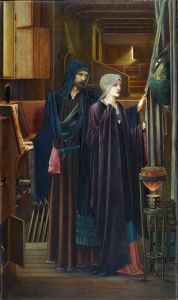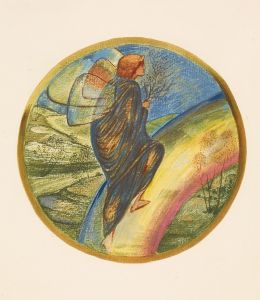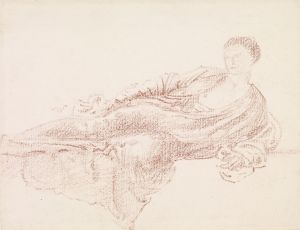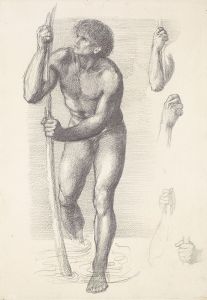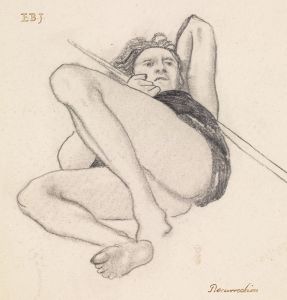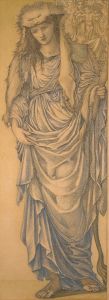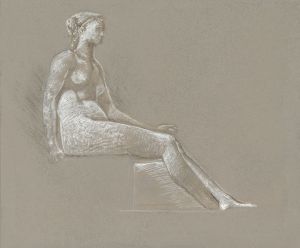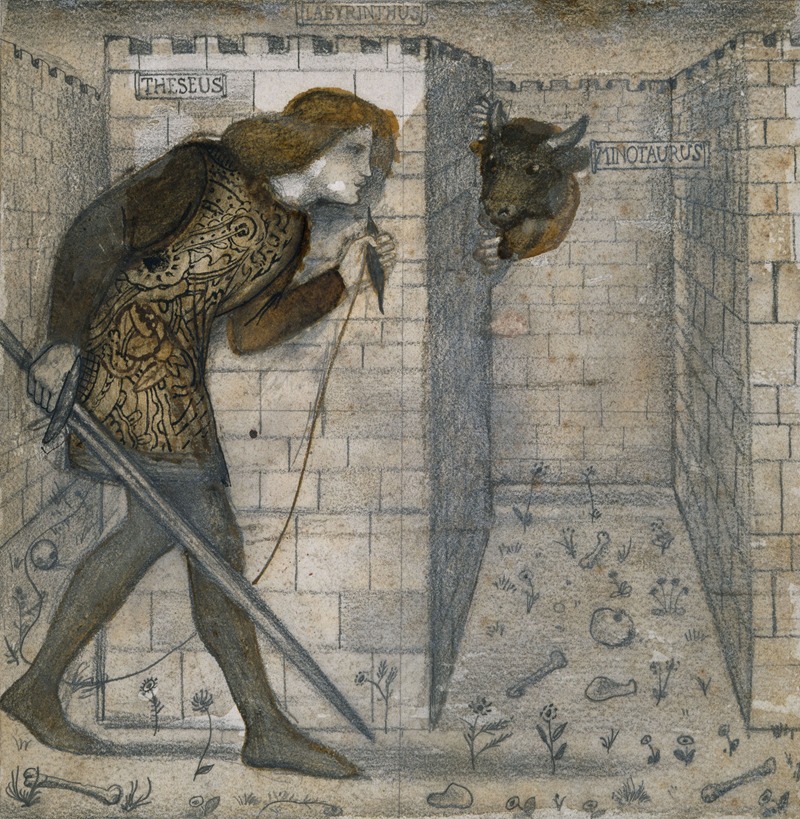
Theseus and the Minotaur in the Labyrinth
A hand-painted replica of Sir Edward Coley Burne-Jones’s masterpiece Theseus and the Minotaur in the Labyrinth, meticulously crafted by professional artists to capture the true essence of the original. Each piece is created with museum-quality canvas and rare mineral pigments, carefully painted by experienced artists with delicate brushstrokes and rich, layered colors to perfectly recreate the texture of the original artwork. Unlike machine-printed reproductions, this hand-painted version brings the painting to life, infused with the artist’s emotions and skill in every stroke. Whether for personal collection or home decoration, it instantly elevates the artistic atmosphere of any space.
Sir Edward Coley Burne-Jones, a prominent British artist associated with the Pre-Raphaelite movement, created the painting Theseus and the Minotaur in the Labyrinth. This artwork depicts a scene from Greek mythology, specifically the moment when the hero Theseus confronts and defeats the Minotaur, a creature with the body of a man and the head of a bull, within the labyrinth of Crete.
The painting is notable for its focus on the psychological and emotional tension of the mythological narrative. Burne-Jones chose to emphasize the human drama of the encounter rather than the physical violence typically associated with the story. In the composition, Theseus is shown in a moment of triumph over the Minotaur, but the scene is rendered with a sense of restraint and introspection, characteristic of Burne-Jones's style. The labyrinth, a central element of the myth, is suggested in the background, though it is not depicted in intricate detail, allowing the figures to remain the focal point.
Burne-Jones's work often drew inspiration from classical mythology, medieval romance, and literary sources, and this painting is no exception. The myth of Theseus and the Minotaur has been a recurring theme in Western art and literature, symbolizing the triumph of human ingenuity and courage over chaos and barbarism. Burne-Jones's interpretation aligns with the Pre-Raphaelite interest in reviving themes from antiquity and imbuing them with a sense of poetic beauty.
The exact date of the painting's creation is not definitively recorded, but it is consistent with Burne-Jones's broader body of work from the late 19th century. His artistic approach often involved meticulous attention to detail, a subdued color palette, and an emphasis on the emotional resonance of his subjects. These qualities are evident in Theseus and the Minotaur in the Labyrinth, which reflects his commitment to creating art that transcends mere representation and evokes a timeless, dreamlike quality.
The painting is part of Burne-Jones's exploration of mythological and allegorical themes, which were central to his artistic vision. His works were highly influential in the late Victorian art world and continue to be celebrated for their technical skill and imaginative depth. As of now, the current location of Theseus and the Minotaur in the Labyrinth is not widely documented, and further details about its provenance remain limited.





